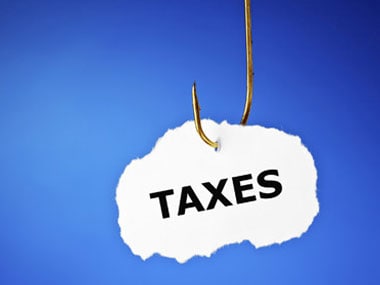The last date for filing your Income Tax Returns (ITR) has been extended to 7 September from 31 August. If you have not filed your returns yet, you better leave everything aside and do so right away. After all, only the returns filed within this due date can be revised, so make it on time. Here’s a quick last minute guide to help you do so. [caption id=“attachment_2180843” align=“alignleft” width=“380”]  ThinkStock[/caption] Should you file a tax return? The laws obligate you to file a tax return if your total income (before deductions under section 80) exceeds Rs. 2,50,000. If you are older than 60 years (but less than 80 years) the exemption limit is Rs. 3,00,000 and for those who are older than 80 years old it is Rs 5,00,000. You must file a return even if taxes have been duly deducted and paid on your income. Residents who have foreign assets or bank accounts outside India or hold financial interest in an entity abroad are compulsorily required to file their tax return. A proof of return filing may be required while seeking loans or applying for visas, so it also helps to meet your tax filing obligations. Also, if excess TDS has been deducted on your income the only way to get a refund is by filing a return, refunds are always processed by the tax department. Companies are also required to mandatorily file their tax returns, irrespective of whether they have earned profits or losses. Who should e-file? E-filing is gaining more and more popularity as e-filers have made the process seamless & extremely simplified. E-filing though is mandatory if you want to claim a tax refund. An exception is provided for those older than 80years and are filing ITR-1 or ITR-2; they can still file a paper return. Those with total income in excess of Rs 5,00,000 also must necessarily e-file. ITR-3, 4,5,6,7 must be mandatorily efiled. Which Income Tax Return Form is applicable? Once you have figured out that you need to file a tax return, you must choose the correct form applicable. Usually the salaried have to make a choice between ITR-1, ITR-2 and ITR-2A. Those who are salaried and own one house property, which may be self-occupied or rented, file ITR-1. Those who own more than one house property have to choose between ITR-2A and ITR-2. If you have capital gains during the year, ITR-2 shall be applicable. If you have foreign income or assets, your return must be filed in ITR-2. Until last year, ITR-1 could not be filed in cases where there was exempt income in excess of Rs 5,000, however this limitation has been taken off this year and ITR-1 can be filed for exempt income in excess of Rs 5,000. This exempt income should not however include agricultural income of more than Rs 5,000, otherwise ITR-2 or ITR-2A must be filed. New disclosures in this year’s filing? This year, the tax department will not accept your tax return if your name as per PAN records does not match with the name mentioned in your tax return. Besides this the income tax department has added several new disclosures in this year’s tax returns. Details of bank accounts such as name of the bank, IFS code, bank account number, whether it is a savings or current account. One also has to select the account where refund should be credited, irrespective of whether you have a refund or not. All income tax return forms have a column for providing Aadhaar card number if you hold one. If you have deposited capital gains in a capital gains account scheme in the past, disclosures have been added for it. Passport number is required to be mentioned in all the forms except ITR-1. How to e-verify your tax return? If sending the physical ITR-V has been the bane of your return filing process, e-verification will make it smooth. Now you can e-verify your tax return by generating an EVC (Electronic Verification Code) from within the government’s tax filing website. However, if your income less deductions is more than Rs 5,00,000 or you are seeking a refund, you have to use the Aadhaar OTP mechanism or e-verify through net banking. If you are unable to proceed with these means, try a couple of attempts. You can always send the ITR-V if you do not succeed. Do note that mentioning aadhaar number in the return form does not mean that you don’t need to verify it with the means listed above. Guest column by Cleartax.in an Income Tax e-Filing website for individuals and businesses.
want to understand what’s new with taxes, read on to know more.
Advertisement
End of Article
Written by FP Archives
see more


)
)
)
)
)
)
)
)
)



